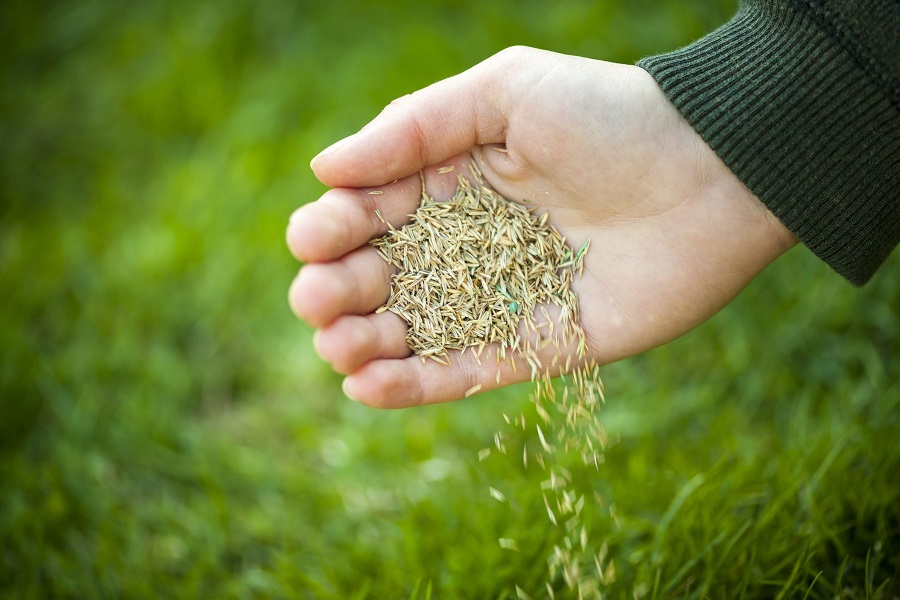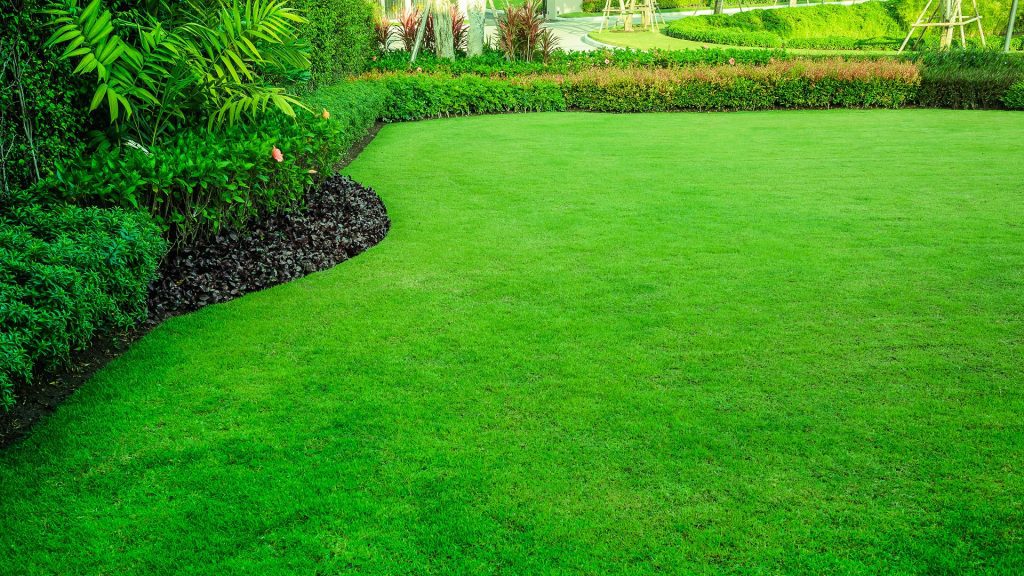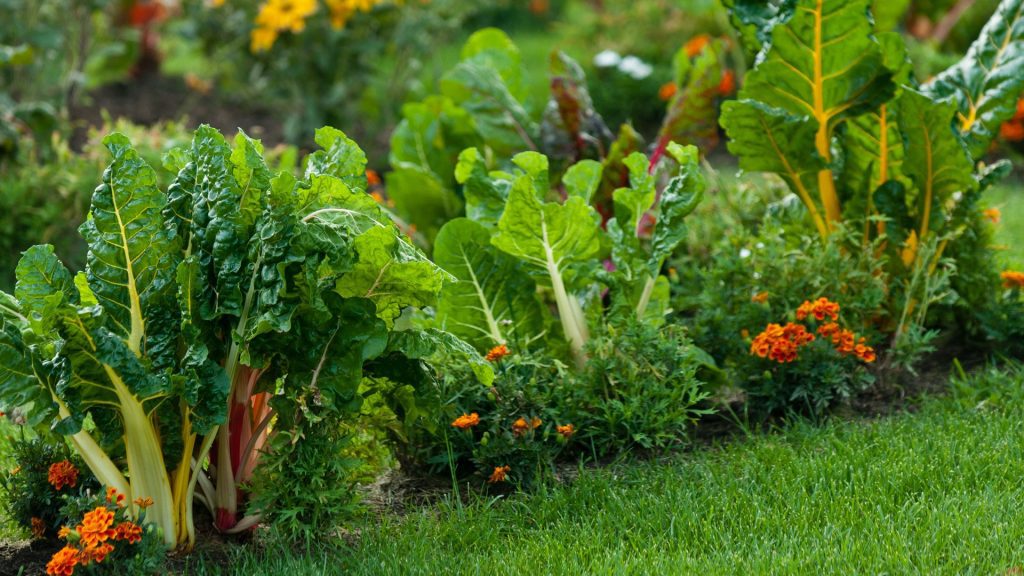
Best Companion Plants For Your Grass
You need to be careful about the types of plants that you choose to have next to your beautiful lawn. The truth is that not every type of plant should be a companion plant for your grass because it can make your lawn unhealthy.
How can surrounding plants negatively affect your lawn? Some plants can be harmful to lawns because of how invasive they are, because they attract pests, or because they don’t really benefit the soil with nutrients that your plants require. So depending on what you have near your lawn, your maintenance time and cost might be increased or decreased.
Here’s GreenIQ’s rundown of the best grass companion plants. Whether they boost the health of your lawn or keep pests away, they will also make your garden much more pleasing to the eye as a bonus.
What, Exactly, Are Companion Plants?
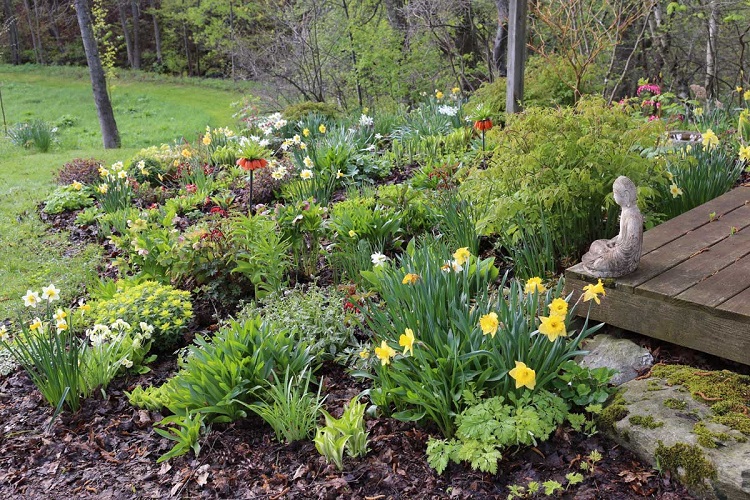
When we use the term “companion plants,” we’re basically referring to plants that should be paired up because they benefit each other. Usually, there are four types of categories when it comes to companion plants. These are the following:
- Food plants (fruits, herbs, and vegetables)
- Nectar-bearing plants (these encourage pollination)
- Ground covers (these plants help to retain moisture in the soil)
- Soil builders (these ensure nutrients in the soil help surrounding plants to thrive)
Best Companion Plants For Grass
There are many different types of plants that make great companions for the grass you’re trying to mtainin, albeit for different reasons. Let’s explore the best grass companion plants.
Monkey Grass
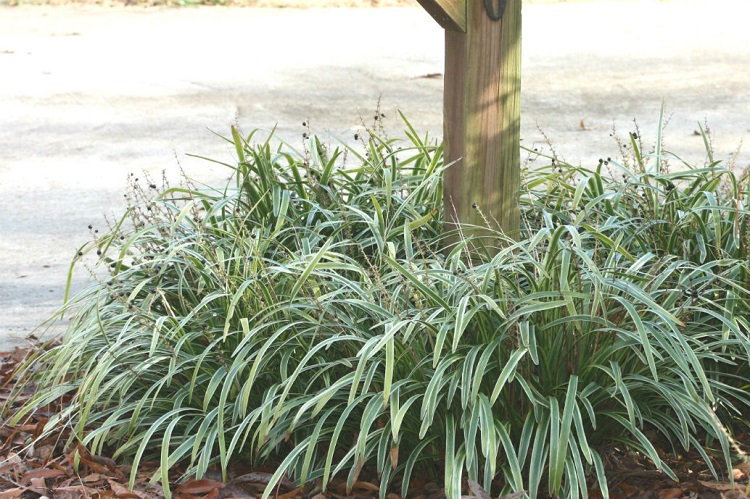
Although it has grass in its name, monkey grass is actually a perennial plant that is a great border plant because it looks beautiful with its purple flowers. It also clumps, so it’s great for filling out any bare spots next to your lawn.
Lavender

Lavender is gorgeous and has a lovely calming fragrance. Lavender can also help your lawn because it repels ants which can damage your grass by building mounds and nests underneath the grass.
If you’re dealing with an ant invasion in your lawn that you don’t want to eliminate with chemical methods, lavender can come to your rescue.
Dandelions

These are flowering plant that attracts butterflies, beetles, and pollinating bees, all of which are good for your garden. Their height will also be a great shelter for animals like hedgehogs, frogs, and lizards. This encourages an ecosystem to form in your garden.
Dandelions also benefit your grass. They have roots that spread into the ground which can loosen compacted soil, and they’re also great for other plants because they’re equipped with deep taproots that draw nutrients such as calcium from the soil.
They are however also considered a weed since lawn purist do not want any other plants in their grass. Dandelions spready easily and readily everywhere.
Weed-Repellent Plants
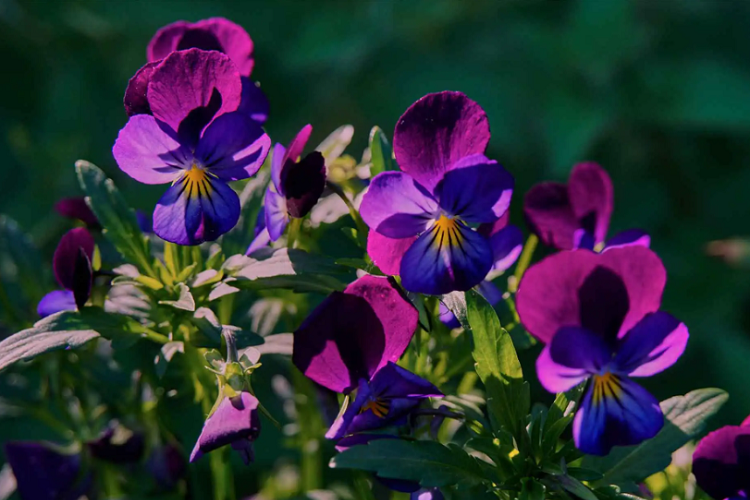
There are plants that help to keep weeds away from your garden, so these are great to plant in your lawn.
- Violets: These are not just pretty! Violets help to crowd out other plants in your lawn, so they’re great for protecting the grass against weeds while looking good. You want to avoid weeds as much as possible because of how they kill your grass, so violets are a good companion plant to consider.
- Catmint: This is a type of herb that produces bunches of blue-lavender flowers and grayish-green foliage. It’s durable in harsh conditions and attracts butterflies, hummingbirds, and bees to its blooms while repelling rabbits and deer.
- Thyme: When your thyme plants have begun growing they will fill out space between them so that weeds don’t have space to grow. This is especially the case when planting creeping varieties that can be used as ground cover.
- Yarrow: Yarrow is a herb that has medicinal properties, so you might want to have it in large quantities in your garden. It looks beautiful as it comes in a variety of colors, such as white and pink in the case of wild yarrow; and orange, pink, red, and yellow in the case of cultivated yarrow. Yarrow is resistant to weeds, but also pests and drought.
Nitrogen-Rich Plants

Since the grass of your lawn requires nitrogen to grow and be healthy, choosing cover crops that have nitrogen and can add this useful nutrient to your soil is a good idea.
These are sometimes known as green manure because of how beneficial they are to the soil, and they include clover, legumes, alfalfa, and peas.
In addition, these are also referred to as nitrogen-fixing plants, which means that the plants add nitrogen to the soil as they grow.
But again as with dandelions some consider clovers weeds in the pure lawn camp, so while clover does readily spready it also spready everywhere.
Plants that repel flies
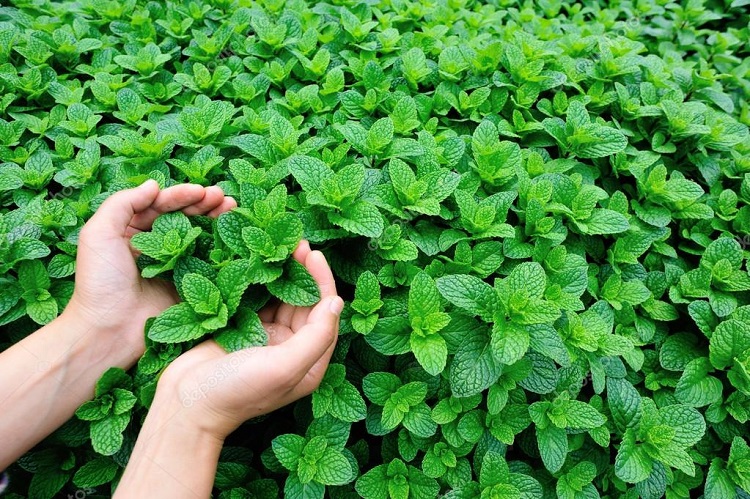
If you’re finding flies in your lawn, you’ll know how invasive and annoying they can be. To naturally repel flies, you should plant lemongrass and mint.
The latter is especially beneficial because it repels mosquitoes and ants that can be attracted to your lawn and damage it.
Plants that repel certain birds
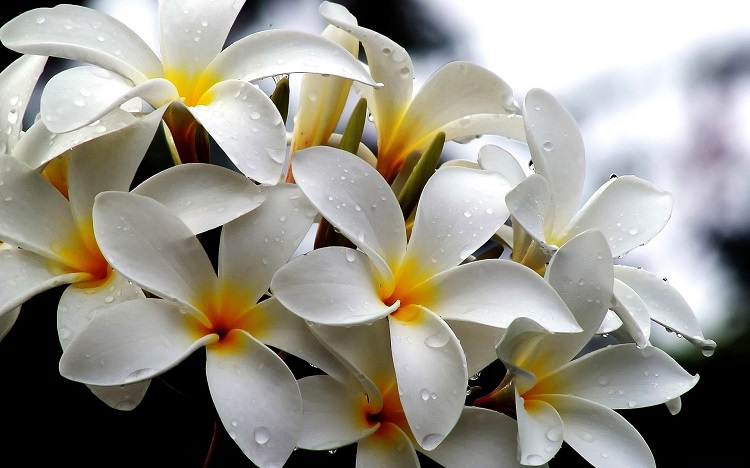
You obviously want to bring more birds into your garden because of how beautiful they are and how they can benefit your grass by eating insects. Some types of birds, such as swallows, also feed on weeds which can increase your lawn health.
However, there are some birds that can be damaging to your grass. These include birds that dig up your lawn in order to find insects in the soil. If you’ve seen this happen in your garden, you’ll naturally want to keep those birds away.
You can do this by planting more white flowers in your garden. Apparently, this color repels birds! Some plants that protect your grass and can be found in the color white include yarrow, which also has other benefits for your lawn as we’ve already seen.
Plants that repel pests

There are various pests that can damage your grass, so you don’t want them hanging around on your lawn. Here are some common garden pests and how to deter them naturally with great grass companion plants.
- Alliums: If you’re dealing with slugs and aphids, you can keep them away from your grass and plants by planting alliums, which are a member of the onion family. They look beautiful with their large balls of purple flowers, so they will also enhance the appearance of your lawn. Slugs are bad for your lawn because they target growing roots and shoots in the grass, and they kill off seedlings so your grass can’t grow. Aphids, on the other hand, can make your grass turn yellow. They draw plant juices from the blades of grass while injecting a toxin into the grass that kills them off.
- Chrysanthemums: These gorgeous flowers have various uses around the garden. They’re ideal for use in borders and they make your lawn look lively and beautiful. They have a secret feature you might not know, though – they have a natural insecticide called pyrethrin. This keeps ticks and spider mites away from your lawn. Ticks are potentially harmful to your pets who love lying around in your grass. By comparison, spider mites turn your grass yellow in color and if you don’t eliminate them they will cause damage to the blades of grass so that they dry out and die.
- Marigold: This plant is another one that’s a natural insect repellent. It releases a scent that keeps mosquitoes and other pests away. While mosquitos might not damage your lawn per se, they can hide in the grass and be a real nuisance when you’re trying to enjoy a beautiful sunny day in your garden. What’s also great about marigolds is that they attract ladybugs to them which kill aphids.
What Plants Does A Healthy Lawn Benefit?
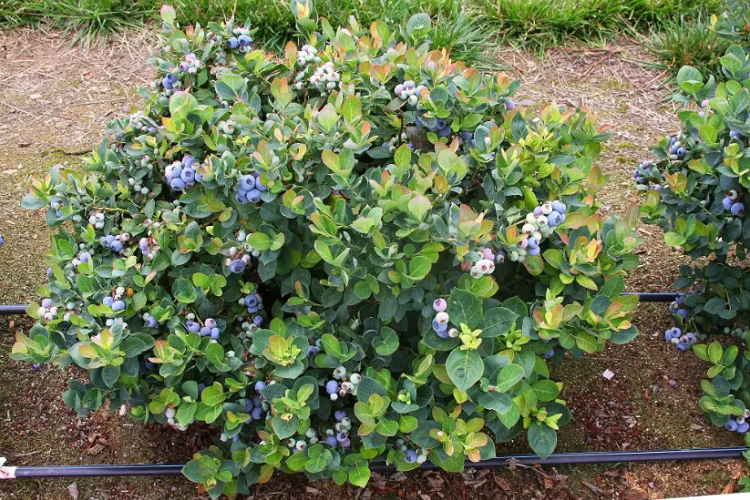
The great thing about companion plants is that they can help each other. It’s lovely for there to be a mutual benefit between your lawn grass and surrounding plants. So, with this in mind, here are some plants that a healthy lawn benefits and how.
- Blueberries: If you want to grow some delicious fruits next to your lawn, consider blueberries. The healthy grass will help the berries to draw more iron from the soil, which is an essential nutrient that this berry crop requires. Since lawns require nutrients such as nitrogen, this type of soil is also ideal in which to grow blueberries, so it’s a match made in heaven.
- Trees: Yes, trees! While we’re talking about plants that complement and benefit grass, we shouldn’t forget about trees. These are the ultimate companion for your grass. They provide some shade which can benefit grasses that thrive in cooler climates, and they also have mulch in their leaves which can benefit your grass with nutrients. This is also beneficial for other plants in your garden.
Plants To Avoid Growing Near Grass
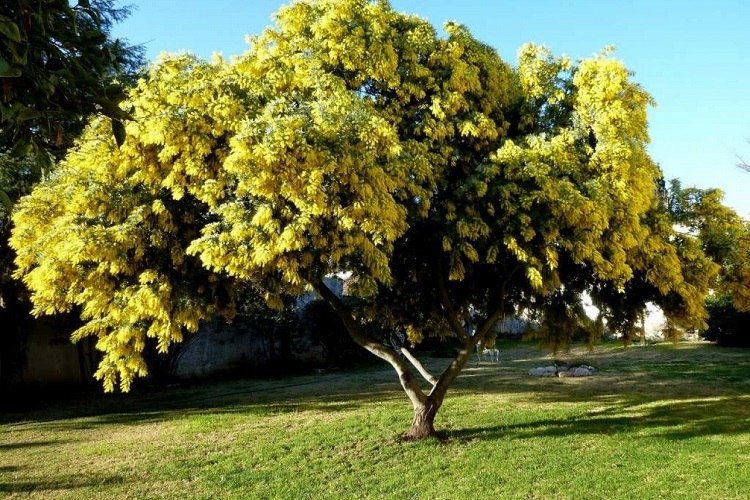
While there are many plants that can benefit your grass and garden in general, there are some that are best avoided for various reasons. Here are some of the worst plants to grow in, or near, your lawn.
Mimosa Tree
While this plant is eye-catching with its feathery leaves and beautiful pink flowers, you don’t want to bring it into your garden. It is a highly invasive plant that sends seedlings everywhere – even into your neighbor’s garden!
It’s also very difficult to eliminate once it has grown and spread, which will make your gardening sessions feel like a chore.
Wisteria
This is another beautiful plant. It displays stunning purple flowers you’ll be drawn to, but it’s got a root system that’s strong enough to cause shoots to appear in your lawn or garden far away from the main wisteria plant – and they’re invasive enough to choke your shrubs, trees, and other plant life.
So, while beautiful, it’s best to avoid wisteria at all costs.
Creeping Charlie (Ground Ivy)
This plant is a wild violet that blooms in shady areas of the lawn. It stays close to the ground and can damage or kill green life around it. You can spot it by its bright green leaves that are scalloped on the edges. It has creeping stems that grow along the ground, which further makes it invasive.
Nasturtium
The cheerful, colorful flowers of the nasturtium plant might make you want to plant them close to your lawn, but don’t! They are targets for aphids, which can be very damaging to your lawn grass.
If you want to lure aphids away from your lawn, however, it can be a good idea to plant nasturtiums in a part of the garden when you want to direct them so they leave your grass alone.
Related Questions
Does the lawn require mulch?

Mulch helps the soil of your lawn to get more nutrients and organic matter. It also helps the soil to better retain water so that your lawn won’t dry out.
Are cockroaches bad for your lawn?
Some cockroaches can eat grass clippings, especially if the grass has decayed because it will be easier to digest in this form. However, they’re not really a danger to your lawn. They also rarely eat plants.
Conclusion
If you want to ensure that your beautiful lawn stays in great condition, you should consider some companion plants to grow in your grass.
In this article, we’ve looked at some of the best companion plants for your lawn, such as plants that keep insects and other pests away and plants that nourish your grass with nutrients it needs to be healthy.
The bonus is that many of these companion plants will look beautiful and add color to your green garden.
Resources:
